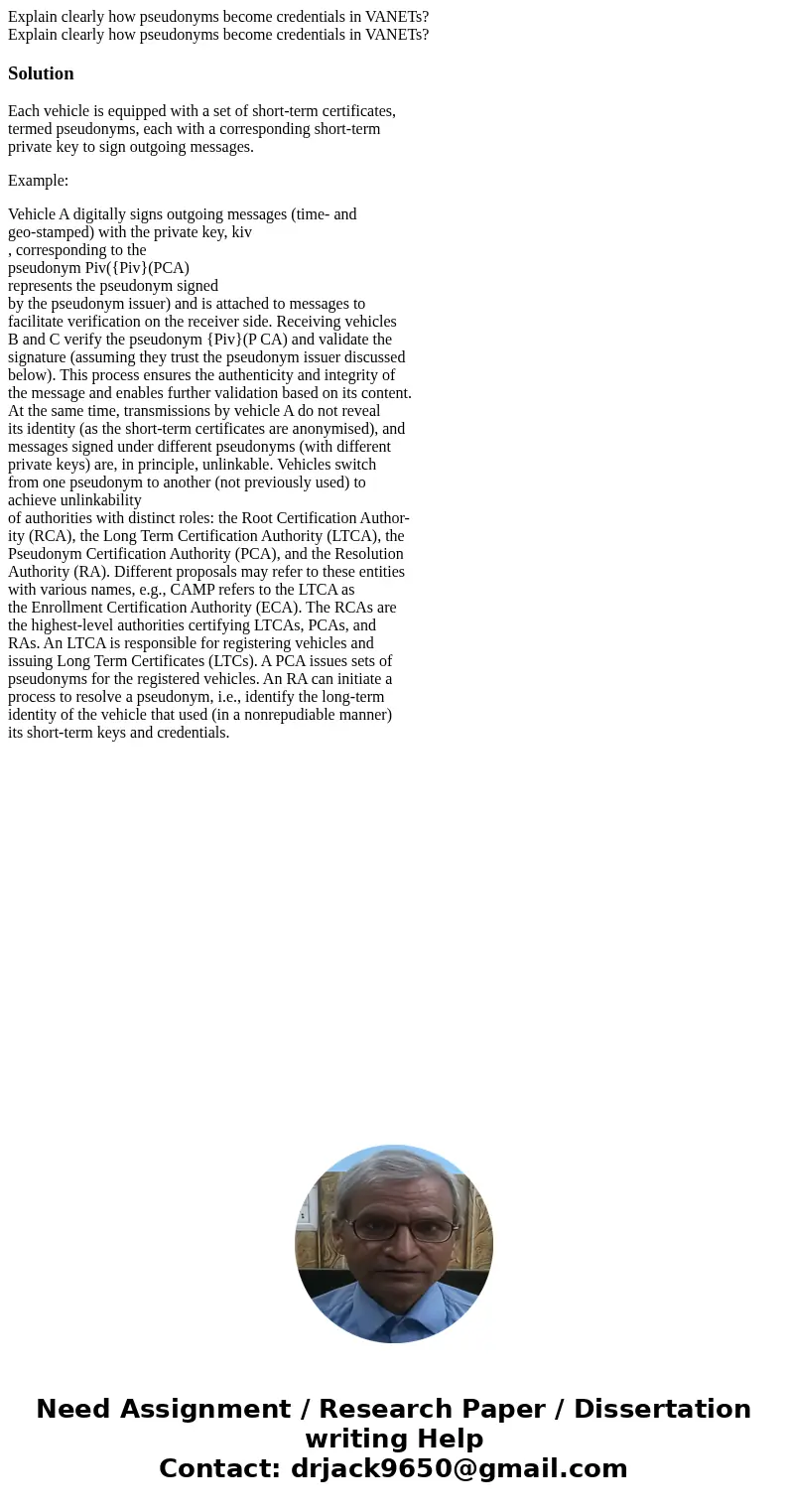Explain clearly how pseudonyms become credentials in VANETs
Solution
Each vehicle is equipped with a set of short-term certificates,
termed pseudonyms, each with a corresponding short-term
private key to sign outgoing messages.
Example:
Vehicle A digitally signs outgoing messages (time- and
geo-stamped) with the private key, kiv
, corresponding to the
pseudonym Piv({Piv}(PCA)
represents the pseudonym signed
by the pseudonym issuer) and is attached to messages to
facilitate verification on the receiver side. Receiving vehicles
B and C verify the pseudonym {Piv}(P CA) and validate the
signature (assuming they trust the pseudonym issuer discussed
below). This process ensures the authenticity and integrity of
the message and enables further validation based on its content.
At the same time, transmissions by vehicle A do not reveal
its identity (as the short-term certificates are anonymised), and
messages signed under different pseudonyms (with different
private keys) are, in principle, unlinkable. Vehicles switch
from one pseudonym to another (not previously used) to
achieve unlinkability
of authorities with distinct roles: the Root Certification Author-
ity (RCA), the Long Term Certification Authority (LTCA), the
Pseudonym Certification Authority (PCA), and the Resolution
Authority (RA). Different proposals may refer to these entities
with various names, e.g., CAMP refers to the LTCA as
the Enrollment Certification Authority (ECA). The RCAs are
the highest-level authorities certifying LTCAs, PCAs, and
RAs. An LTCA is responsible for registering vehicles and
issuing Long Term Certificates (LTCs). A PCA issues sets of
pseudonyms for the registered vehicles. An RA can initiate a
process to resolve a pseudonym, i.e., identify the long-term
identity of the vehicle that used (in a nonrepudiable manner)
its short-term keys and credentials.

 Homework Sourse
Homework Sourse